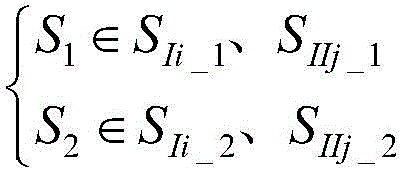A method for judging fault properties of double-circuit lines with shunt reactors on the same pole
A loop fault and identification method technology, applied in the fault location, instrument, measuring electricity and other directions, can solve the problems of long coincidence time, unfavorable fault arc extinguishing, inability to quickly and effectively determine the fault type, etc. strong effect
- Summary
- Abstract
- Description
- Claims
- Application Information
AI Technical Summary
Problems solved by technology
Method used
Image
Examples
Embodiment Construction
[0022] In double-circuit transmission lines on the same pole with shunt reactors, the fault phase terminal voltage has different fault characteristics under different fault properties. If only the single-phase adaptive reclosing principle is used, the fault nature cannot be judged. The research and analysis found that: 1) In case of a ground fault, the nature of the ground fault is judged by using the integral value of the phase terminal voltage when the fault is disconnected: Among them: u Ii (t), u IIj (t) is the sampling value of the terminal voltage of the faulty phase of the two circuits, x is the starting time of the integration, T 0 The power frequency period is 20ms, S Ii_1 , S IIj_1 They are the integral values of the I and II loops with x as the initial integration time; in order to prevent misjudgment caused by the selection of the integral initial time, the method of taking the maximum value of the second integral is adopted, and the second integral initial t...
PUM
 Login to View More
Login to View More Abstract
Description
Claims
Application Information
 Login to View More
Login to View More - R&D
- Intellectual Property
- Life Sciences
- Materials
- Tech Scout
- Unparalleled Data Quality
- Higher Quality Content
- 60% Fewer Hallucinations
Browse by: Latest US Patents, China's latest patents, Technical Efficacy Thesaurus, Application Domain, Technology Topic, Popular Technical Reports.
© 2025 PatSnap. All rights reserved.Legal|Privacy policy|Modern Slavery Act Transparency Statement|Sitemap|About US| Contact US: help@patsnap.com



